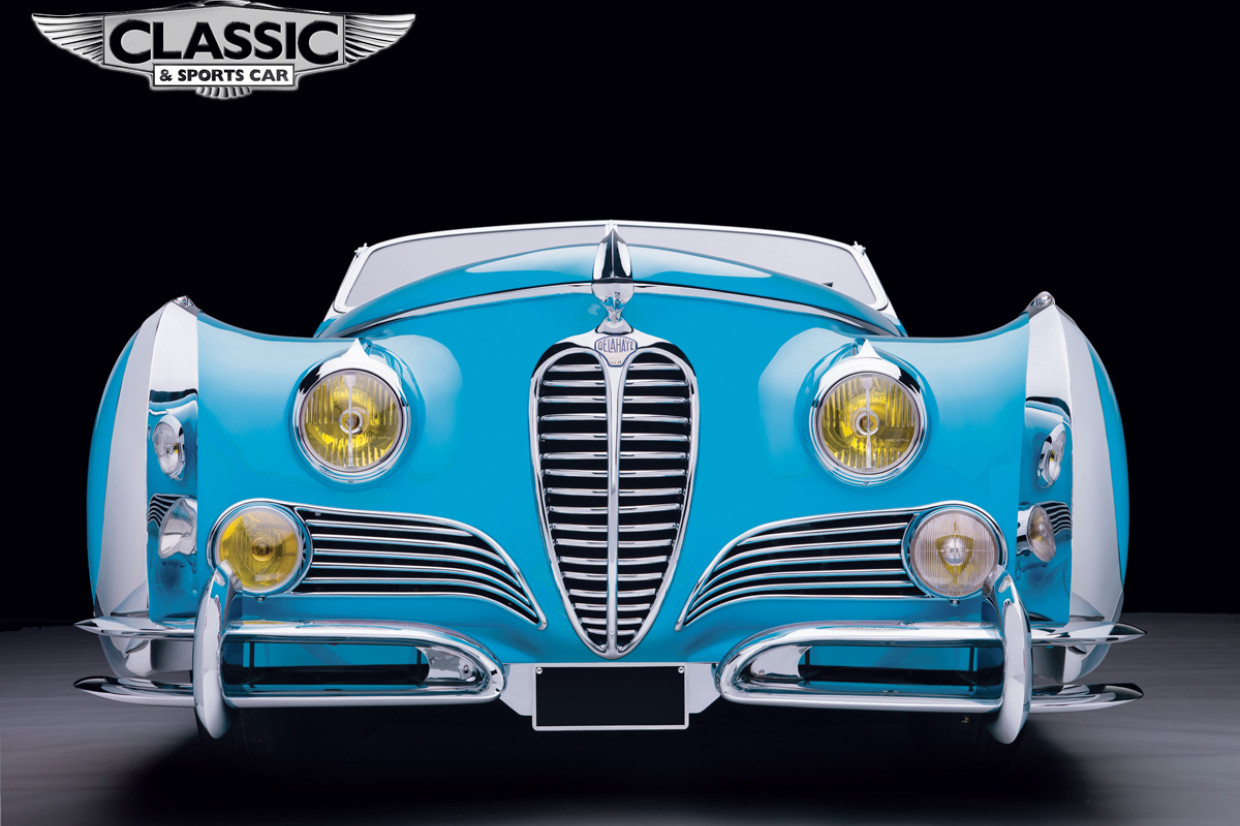
Built for an extravagant English knight and once owned by ‘50s movie siren Diana Dors, this stunning Saoutchik-bodied Delahaye 175 S has been restored to its former glory. Mick Walsh examines the Gallic beauty.
America is naturally associated with the most excessive styling trends, but France developed some seriously flamboyant machines during the swansong of the coachbuilder’s art following WW2. These streamlined wonders – mainly from the Paris workshops of Saoutchik and Figoni et Falaschi – were the automotive equivalent of Baroque architecture, with sweeping wing profiles and protrusions way beyond the wheelbase, all accentuated by dazzling chrome details. Underneath these extravagant forms lay largely warmed-over pre-war engineering, but these unique designs were conceived more as motor show or concours sensations than drivers. Not surprisingly, they required a larger-than-life personality to take the wheel and would become the perfect promotion vehicles for celebrities.

Just such a character was Diana Mary Fluck, the blonde bombshell actress better known as Diana Dors. In 1951, aged 20, she became the youngest registered British owner of a Rolls-Royce, but by ’54 Dors was looking for something more flashy, in keeping with her success. With first husband Dennis Hamilton, she discovered an amazing Delahaye in Paris that just happened to be painted her favourite shade of baby blue and, despite the whopping £6000 price, they had to buy it. Finances were stretched for the young movie sex-symbol because they had just purchased a new Thames-side residence in Bray, though Hamilton could see the decadent Delahaye’s publicity potential. Press reports claimed that the dashboard fittings were ‘gold plated’ and the transparent steering wheel was ‘crystal’, which all added to the hype. It didn’t matter that Dors couldn’t drive (she didn’t pass her test until December ’55) because her stunning, 36D-24-35 hourglass figure perfectly complemented the voluptuous motor. Dors didn’t keep the Saoutchik-bodied wonder long because Hamilton didn’t enjoy driving it – maybe the Cotal gearbox was troublesome – and it was traded in for a new Cadillac Eldorado convertible, also finished in light blue, in 1955.

Under its steel skin, however, the five-year-old Delahaye was far more modern than the Cadillac. The Type 175 S was one of just 51 built up to 1951, during the final years of the once-great French marque before the Hotchkiss takeover. Its long bonnet concealed a 4456cc straight-six, with a seven-main-bearing crankshaft. Fed by triple Solex carburettors, it produced a smooth 160bhp. The chassis had Dubonnet front suspension with a de Dion tube and parallel semi-elliptics at the back, while the hydraulic brakes worked handsome finned alloy drums.

Coachwork for the new T175 S was generally tailored to a client’s tastes and wallet. Saoutchik at Neuilly-sur-Seine and rival Figoni vied for business, even stealing ideas from each other. Bizarrely, the inspiration for one series of spectacular bespoke bodies was the narval (narwhal), a strange-looking whale better known as the ‘unicorn of the seas’ because of the male’s helical tusk. This school of Delahayes and Cadillacs all sported an extended nose above the conventional grille. Adorned with flowing chrome embellishments, they looked as if they could have been dreamed up by surrealist Salvador Dalí.









